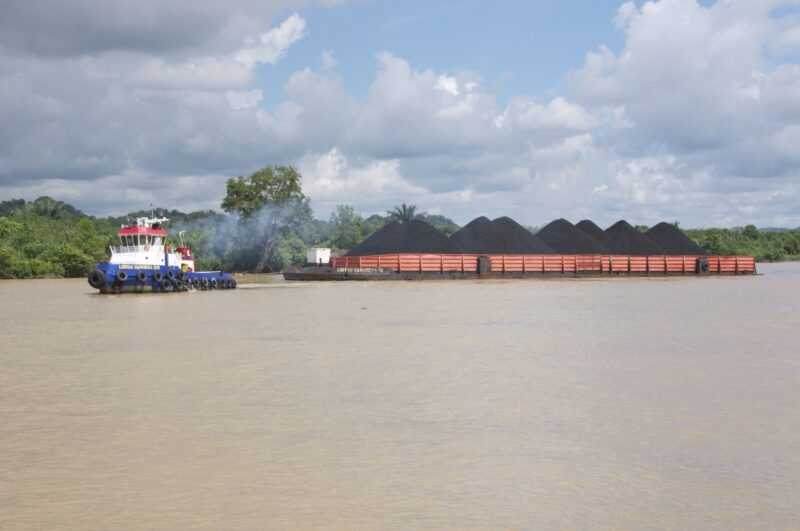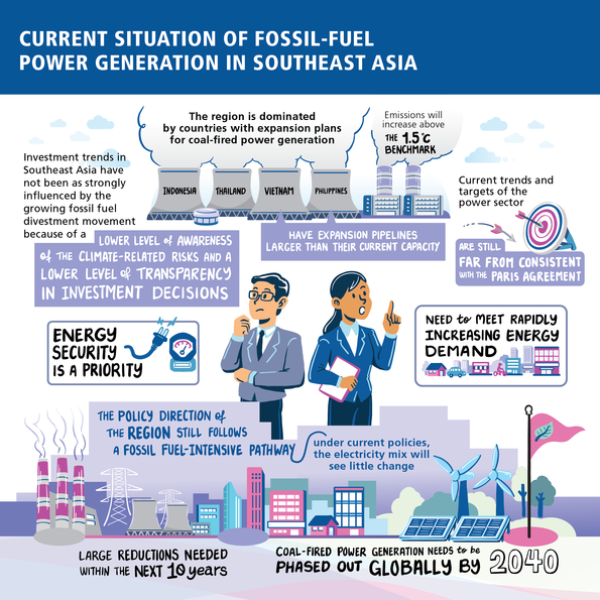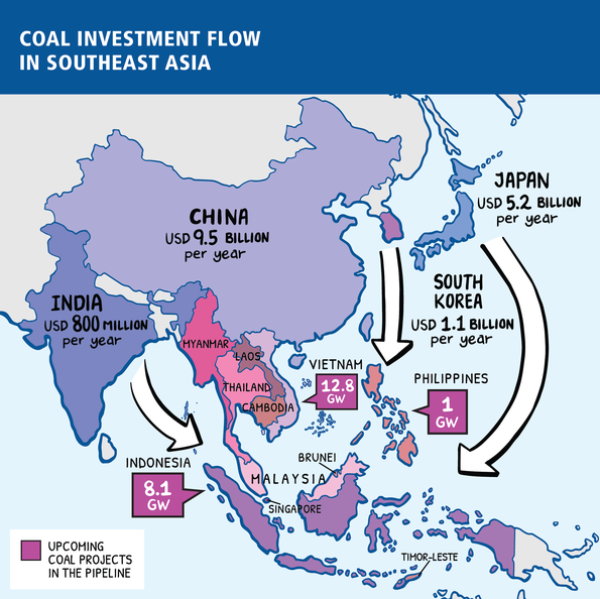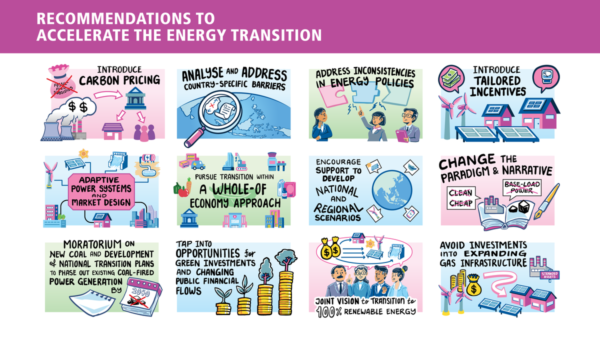Southeast Asia’s plans to expand coal power are undermining the global energy shift
Ursula Fuentes
Share

Tackling this requires understanding the factors behind it. These include economic growth, urbanisation and a rapidly growing population, but also a lack of awareness of the risks of climate change, as well as foreign funding of energy infrastructure, according to a recent report published by Friedrich-Ebert-Stiftung (FES) in cooperation with Climate Analytics, the Climate Change Working Group in Vietnam (CCWG) and Climate Action Network (CAN) Southeast Asia.
Worldwide, the economic case for renewable energy is growing, and the viability of building new coal plants, or even maintaining existing ones, is shrinking. But this trend is not taking off in Southeast Asia. The region is home to only 4 percent of the current global coal capacity, but to 15 percent of the new power plants planned or under construction worldwide.
Coal-fired power generation grew 12 percent in the region in 2019, while it dropped elsewhere. Altogether, coal capacity has more than doubled in Southeast Asia since 2010.
What is driving this trend against all long-term economic and environmental logic? We need to look beyond the region.
Government money in China, Japan and South Korea is still strongly financing coal expansion in Southeast Asia. Through treasury funds or state-owned utilities, these countries have put around USD 24 billion for around 16 gigawatts of coal projects in Indonesia, and USD 16 billion for around 15 GW in Vietnam, according to the Coal Finance Tracker by EndCoal.
At home, these countries have all three committed to net-zero emissions levels by mid-century. And Japan announced in July it was cutting back on its international funding of fossil fuel projects.
There are also signs of positive change in Southeast Asia. In 2020, the Philippines announced a moratorium on new coal, which could remove up to 10 GW of planned coal capacity from the current pipeline. Vietnam saw a record increase in solar capacity in 2019 and the first half of 2020, and is moving towards plans to limit coal and enhance renewable energy.
But even if possibilities for fossil fuel divestment are improved, policy uncertainty and other barriers persist across the region, potentially driving investments for renewables elsewhere.
Indonesia, as one of the major coal exporting countries of the world, supports its own coal mining and production industry with a range of subsidies and public finance. Thailand’s fossil fuels are focused on its large gas sector, which has strong ties to government. Vietnam added 5GW of renewable energy in 2019, but its coal pipeline is still huge.
These vested interests have led to over-investment in electricity capacity in some areas. The high reserve capacity is justified by overestimated demand increases, while other parts still do not have access to reliable electricity.
These vested interests are driving the “cheap coal” myth. Unpacking this relationship is key to overcoming the barriers to investments and driving the transition to renewable energy. We need to change the narrative, and this is where civil society organisations can play a pivotal role by publishing the right information to the right audience.
For example, the electrification of transport is making little progress in Southeast Asia, with the partial exception of two and three-wheelers. In contrast to China or India, there are no strong policies to support electric mobility, which would not only reduce air pollution but also increase the share of renewable energy. In the region, only Indonesia, Malaysia, Singapore and Thailand have electric vehicle deployment targets.
For the reduction of coal use, following the Philippine example of a moratorium on new plants could be a very important step for other countries in the region. Such a moratorium combined with a plan to phase out existing coal by 2040 across the region would be a game changer and an important signal for investors. However, this would need to be combined with support for renewable energy and electrification of transport and industry.
Furthermore, care must be taken to avoid stranded assets, in the form of investments sunk into power plants that end up being decommissioned before the end of their natural life. This applies to new coal plants but also to any gas power facilities, as gas may be cleaner than coal but is still inconsistent with any zero-emission strategy.
Southeast Asia can and must also build on its vast and barely tapped potential for solar and wind, as well as focus regional cooperation around a joint vision to a just transition to fully renewable energy systems.
Header image: Coal mining is one of the drivers of deforestation in East-Kalimantan. flyingfabi, Flickr (CC BY-NC 2.0 DEED)














